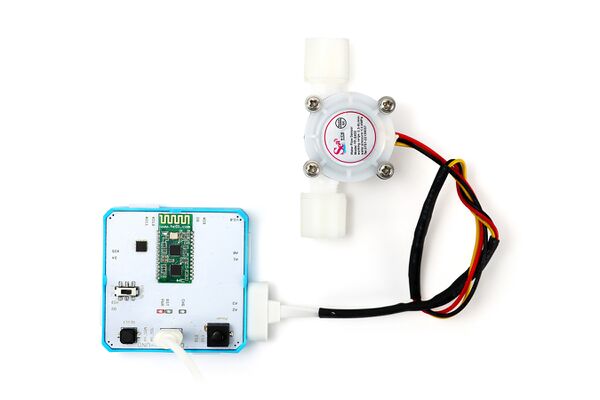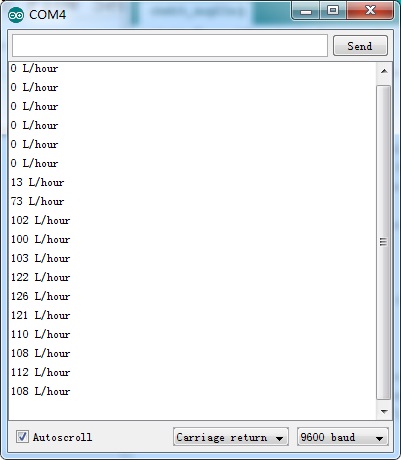Crowbits-G1-4 Water Flow Sensor
Description¶
Water flow sensor consists of magnetic core, rotating impeller, external casing and sensor and a hall-effect sensor. When water flows through the rotor, rotor rolls, it activates the magnetic core to trigger switch action speed changes with different rate of flow. The hall-effect sensor outputs the corresponding pulse signals, users can get the flow speed via detecting the pulse. It is suitable to detect flow in water dispenser or coffee machine
Features¶
- Easy to use
Specification¶
- Operating Voltage: 3.3V DC
- Operating Temperature: ≤80℃
- Liquid Temperature: ≤120℃
- Operating Humidity: 35%~90%RH
- Water Pressure: ≤2.0MPa
- Storage Temperature: -25~+ 80℃
- Storage Humidity: 25%~95%RH
Usage¶
The following sketch demonstrates a simple application of the module.
1.You need to prepare a Crowbits motherboard, such as Crowbits-UNO board.
2.Connect the module to the D2 interface of the Crowbits-UNO board, as shown in the figure:
3.Upload the following code to the Crowbits-UNO board.
// reading liquid flow rate using Crowduino and Water Flow Sensor
volatile int NbTopsFan; //measuring the rising edges of the signal
int Calc;
int WaterFlowsensor = 2; //The pin location of the sensor
void rpm () //This is the function that the interupt calls
{
NbTopsFan++; //This function measures the rising and falling edge of the hall effect sensors signal
}
void setup()
{
pinMode(WaterFlowsensor, INPUT); //initializes digital pin 2 as an input
Serial.begin(9600); //This is the setup function where the serial port is initialised,
attachInterrupt(0, rpm, RISING); //and the interrupt is attached
}
// the loop() method runs over and over again,
// as long as the Arduino has power
void loop ()
{
NbTopsFan = 0; //Set NbTops to 0 ready for calculations
sei(); //Enables interrupts
delay (1000); //Wait 1 second
cli(); //Disable interrupts
Calc = (NbTopsFan * 60 / 73); //(Pulse frequency x 60) / 73Q, = flow rate in L/hour
Serial.print (Calc, DEC); //Prints the number calculated above
Serial.print (" L/hour\r\n"); //Prints "L/hour" and returns a new line
}
4.After the upload is successful, open the serial port monitor, the baud rate is set to 9600. The serial port will print out the current water flow.


